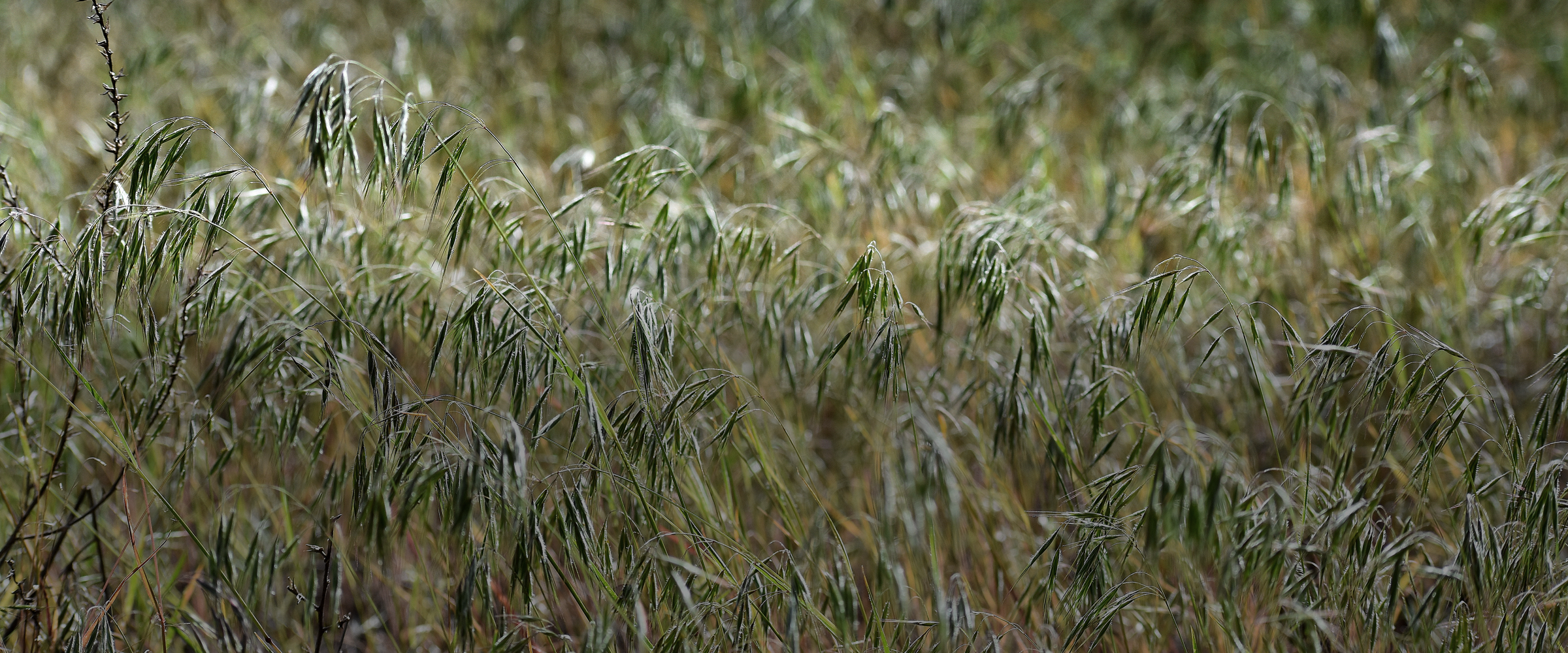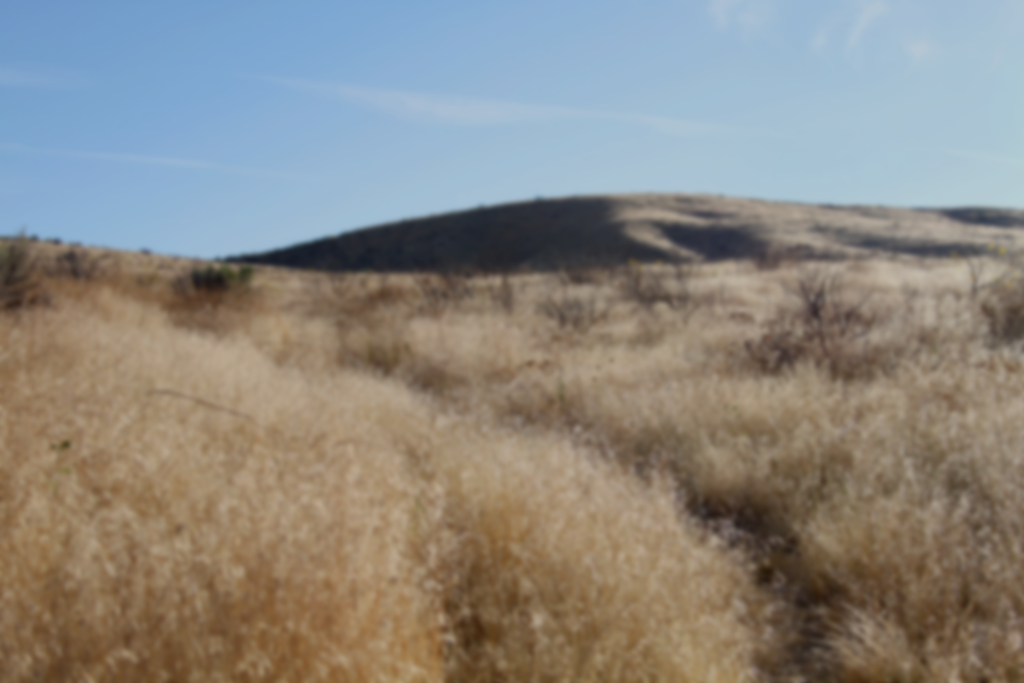
Got cheatgrass?
Our goats can help!
What is cheatgrass?
Cheatgrass (Bromus tectorum) is an annual cool-season grass that evolved in Europe and Western Asia. It is among the first species to germinate and grow as winter ends.

Why is cheatgrass problematic?
Cheatgrass has a quick life cycle. Its early growing season uses up moisture in the soil that could otherwise be used by more deep-rooted, long-lasting native plant species. This allows cheatgrass to out-compete other species, lowering the diversity of plants in the area, thereby reducing wildlife habitat. It matures to seed by early June and dries out a couple weeks later. Cheatgrass has fine stems and leaves, and it grows in dense patches. A field of dry, dead cheatgrass is a perfect setting for a wildfire.
These characteristics lengthen the fire season and lead to a higher frequency of fires, which our native plants are not adapted to. But guess who is? Our guy, the cheatgrass, who thrives in recently-burned landscapes. Cheatgrass leads to more fires, which leads to more cheatgrass, etc. All the while it displaces biodiversity and natural habitats.
How can goats help?
Yes, that's a lot of bad news about cheatgrass. But we've got a couple nuggets of good news:
First, cheatgrass is highly palatable and nutritious for grazing animals like our goats. As it's one of the earliest plants to appear in the spring, it is relatively easy to target.
Second, cheatgrass seeds are only viable for two years. That means if we graze down most of the cheatgrass for two years, preventing it from going to seed, its seedbank will be spent. Scientists studying targeted grazing recommend putting down a seed mix of native-grass before the second grazing, which the goats will stomp into the soil and jump-start with fertilizer as they graze the last of the cheatgrass. After a couple years of proper management, your cheatgrass stand can be converted to a diverse native grass setting, making it less prone to fire risk and a healthier environment for all the beings we share this beautiful land with.
How do I start?
If you know you have cheatgrass, call or email us to schedule a site visit! Cheatgrass has a narrow window of growth so we can only hit so many sites each spring.
Resources and References
How to identify cheatgrass:
Additional research on cheatgrass and targeted grazing:
Working Lands for Wildlife: Why Cheatgrass is Bad
“Targeted Livestock Grazing to Suppress Cheatgrass” Jeff Mosley, Montana State University
“Targeted Grazing to Manage Cheatgrass” Ben Beckman, Mitch Stephenson, University of Nebraska



